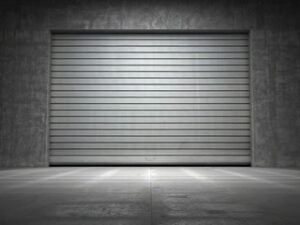If you’re seeing signs that your AC system is struggling, it may be time to call for repair or replacement. Understanding your options can help you make the right decision for your comfort and your budget.
Some issues, such as a clogged air filter or faulty thermostat, are easy to address on your own. But complex problems such as refrigerant leaks or internal component malfunctions require professional help. Contact AC Repair Round Rock for professional help.

The air conditioner’s drainage line can become clogged with debris and other contaminants. This causes the system to overwork in order to cool your home. Overworking your air conditioner results in lower energy efficiency and higher energy bills, as well as increasing the risk of more serious problems.
A clogged drain line is most commonly caused by an obstructed or soiled filter or by a malfunctioning fan in the condenser unit. It can also be the result of electrical glitches or a defective compressor that hampers refrigerant circulation. It’s best to have an expert examine the problem and perform any necessary repairs.
Other common AC problems include rattling, buzzing or humming noises and an unpleasant musty odor. These issues often indicate a problem with the evaporator coils, the compressor, or the pressure switches. It’s essential to get these problems addressed promptly before they escalate into expensive repairs or require replacement. Regular maintenance tasks like changing the air filter, cleaning the outdoor unit, and ensuring that the ductwork is free of leaks can help prevent these problems.
Faulty Thermostat
Thermostats serve as the command center for your entire HVAC system. They regulate indoor temperatures to keep your home comfortable year-round, and they save you money by lowering energy bills. But, like any machine, they can experience malfunctions. When your thermostat goes bad, it can cause a number of problems that disrupt your home’s comfort and lead to expensive repair costs. Identifying problems early is key to avoiding costly AC repairs and reducing energy waste.
When you change the temperature setting on your thermostat, it should respond almost immediately. If it takes longer than a minute to cool your house, the thermostat may be having trouble communicating with the HVAC system. Moreover, the problem could be a sign of a failing or even obsolete thermostat. Most thermostats last about 10 years, so if yours is getting up there in age, it might be time to invest in a new one.
You’ll also need to pay attention if the HVAC system keeps shutting off and starting over again before your home reaches the desired temperature. This is known as short cycling and can lead to premature wear and tear on the compressor and other components of your cooling system. A professional will be able to help you determine the root of the problem and fix it.
Another common symptom of a failing thermostat is inaccurate temperature readings. Over time, dust, dirt, and lint can accumulate inside your thermostat, which causes it to read incorrectly. You can try removing the cover and wiping it down with a soft cloth. You can also check that all the wires are firmly and properly connected.
The thermostat isn’t the only part of your HVAC system that can experience a malfunction, but it’s one of the most important. Ignoring a thermostat problem will quickly escalate into bigger issues that affect your home’s comfort and increase energy bills. Recognizing thermostat trouble early and taking prompt action can help you avoid unnecessary repairs, save energy, and extend the life of your thermostat and AC unit. Here are nine signs that your thermostat needs to be repaired or replaced.
Leaking Refrigerant
In a region where summer temperatures often rise to the 90s or higher, a fully functional AC system isn’t just a luxury. It’s a necessity for your family to live comfortably in your home. However, like any machine, your air conditioner can occasionally break down or develop issues that need to be addressed quickly. Recognizing early warning signs and acting promptly can help you avoid more extensive repairs and extend the life of your unit.
If your AC is blowing warm air, there are many potential causes. Some are easy to fix and others require the expertise of a professional.
The thermostat might not be set properly. Check the setting and make sure it’s set to “cool.” A dirty air filter restricts airflow, which can cause your AC to overwork and begin blowing warm air. Check and change your air filter regularly to maintain optimum cooling performance.
A clogged condenser unit might also impede the cooling process by blocking airflow through the coils. Remove debris from the coils, and clean the fins with a commercial spray. To clean the evaporator, open the access panel to the outdoor unit, cut down any grass, weeds, or vines that may be obstructing it, and flush out the evaporator with a commercial coil cleaner (available at refrigerator supply stores).
A refrigerant leak is another common air conditioning problem that needs immediate attention from a professional. Low refrigerant levels impair your AC’s ability to cool your home, and can harm the environment. A licensed technician should be called in to detect and repair refrigerant leaks.
Ductwork problems can also cause a lack of consistent cooling. If cooled air isn’t reaching every room of the house, there could be a gap in your ductwork that allows hot air to enter or cold air to escape. Sealing drafty areas with weather stripping and caulking can help.
Keeping up with regular AC maintenance and addressing any problems immediately can extend the life of your air conditioning system, preventing costly breakdowns and keeping you and your family comfortable throughout the summer. If you suspect your AC is having a problem, contact Boothe’s for fast, efficient AC repairs.








